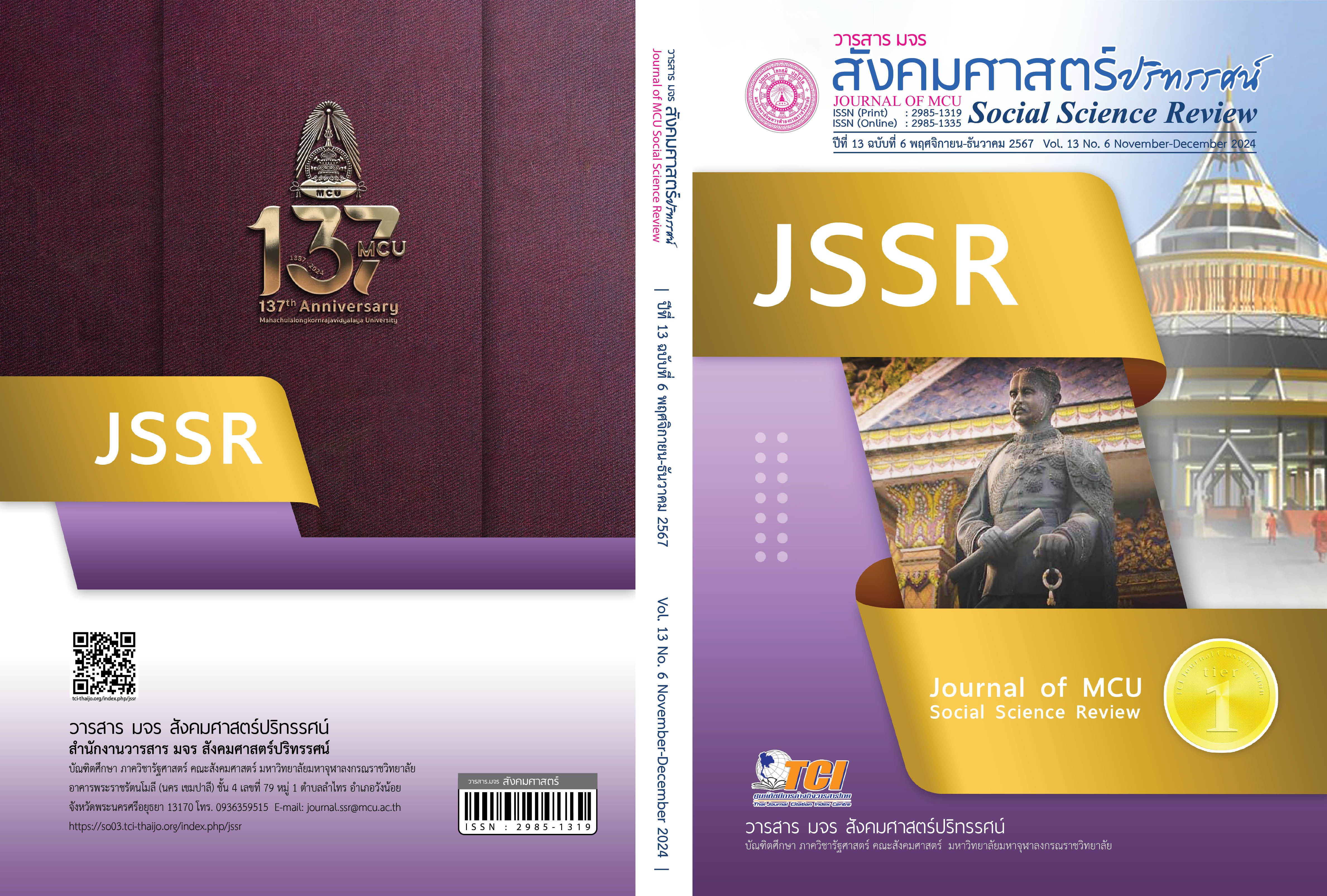การศึกษาเปรียบเทียบโครงการอาหารกลางวันโรงเรียนระหว่างประเทศไทยและญี่ปุ่น
คำสำคัญ:
โครงการอาหารกลางวันในโรงเรียน, การศึกษาด้านอาหารและโภชนาการ, โรงเรียนประถมศึกษาบทคัดย่อ
บทความวิจัยนี้มีวัตถุประสงค์ 1. ศึกษาเปรียบเทียบความเป็นมาและการพัฒนาโครงการอาหารกลางวันในโรงเรียนประถมศึกษาของประเทศญี่ปุ่นและประเทศไทย และ 2. สำรวจสภาพปัจจุบันของโครงการอาหารกลางวันในโรงเรียนประถมศึกษาในจังหวัดพิษณุโลก ใช้วิธีการเชิงคุณภาพร่วมกับวิธีการศึกษาเปรียบเทียบเชิงเปรียบเทียบนโยบายระดับชาติที่เกี่ยวข้องกับโครงการอาหารกลางวันในโรงเรียนโดยอาศัยการวิเคราะห์เอกสารและ วิธีสำรวจภาคสนาม โดยวิธีการคัดเลือกแบบเจาะจงกับผู้บริหาร 3 และครู 3 คน ของ 3 โรงเรียนในจังหวัดพิษณุโลก โดยการสัมภาษณ์ผู้บริหารใช้การวิเคราะห์ข้อมูลเชิงเนื้อหา
ผลการวิจัยพบว่า 1. โครงการอาหารกลางวันในโรงเรียนของญี่ปุ่นเริ่มต้นเมื่อประมาณ 60 ปีก่อน และเนื้อหา มาตรฐาน แนวทาง และคุณวุฒิครูโภชนาการได้รับการกำหนดไว้อย่างชัดเจนในนโยบายโชคุอิกุ (Shokuiku) เพื่อการศึกษาด้านอาหารและโภชนาการในประเทศญี่ปุ่น ในขณะที่ประเทศไทย โครงการอาหารกลางวันที่โรงเรียนเริ่มต้นด้วยการสนับสนุนด้านงบประมาณ จากนั้นมุ่งเน้นไปที่เด็กที่ขาดสารอาหารและขัดสน ในปี พ.ศ. 2542 ได้มีการขยายอาหารกลางวันฟรีให้ครอบคลุมนักเรียนชั้นประถมศึกษาทุกคน ในปี พ.ศ. 2551 ได้มีการจัดตั้งคณะกรรมการอาหารแห่งชาติขึ้นเพื่อดูแลการจัดการด้านอาหารและการศึกษาด้านอาหารของประเทศ 2. ผลการสำรวจ พบว่า โรงเรียนในจังหวัดพิษณุโลกมีนโยบายและองค์ประกอบการศึกษาด้านอาหารและโภชนาการในโครงการอาหารกลางวันในโรงเรียนตามคำแนะนำของ สพฐ.
เอกสารอ้างอิง
Agriculture Organization of the United Nations. (2020). School-based food and nutrition education. Retrieved March 20, 2020, from https://doi.org/10.4060/cb2064en
Chavasit, V. et al. (2013). Thailand policy on NCD prevention. Obes Rev, 14(s2), 96-105.
Hans, M. K. & Korda, M. (2019). Tactical nuclear weapons. Bulletin of the Atomic Scientists, 75(5), 252-261.
Harada, T. (2018). Nuclear flash burns: A review and consideration. Burns Open, 2(1), 1-7.
Hirama, T. et al. (2003). Initial medical management of patients severely irradiated in the Tokai-mura criticality accident. Br J Radiol, 76(904), 246-253.
Prime minister’s office, Headquarter for healthcare policy. (2015). Report about The Amsterdam Initiative against Malnutrition (AIM). Retrieved March 20, 2020, from https://shorturl.asia/EXRgm
The National WWII Museum. (2020). The Most Fearsome Sight: The Atomic Bombing of Hiroshima. Retrieved March 20, 2020, from https://www.nationalww2museum.org/war/articles/atomic-bomb-hiroshima
Turco, R. P. et al. (1983). Nuclear Winter: Global Consequences of Multiple Nuclear Explosions. Science, 222(4630), 1283-1292.
Xia, L. et al. (2022). Global food insecurity and famine from reduced crop, marine fishery and livestock production due to climate disruption from nuclear war soot injection. Nat Food, 3(1), 586–596.
ดาวน์โหลด
เผยแพร่แล้ว
รูปแบบการอ้างอิง
ฉบับ
ประเภทบทความ
สัญญาอนุญาต
ลิขสิทธิ์ (c) 2024 วารสาร มจร สังคมศาสตร์ปริทรรศน์

อนุญาตภายใต้เงื่อนไข Creative Commons Attribution-NonCommercial-NoDerivatives 4.0 International License.
เพื่อให้เป็นไปตามกฎหมายลิขสิทธิ์ ผู้นิพนธ์ทุกท่านต้องลงลายมือชื่อในแบบฟอร์มใบมอบลิขสิทธิ์บทความให้แก่วารสารฯ พร้อมกับบทความต้นฉบับที่ได้แก้ไขครั้งสุดท้าย นอกจากนี้ ผู้นิพนธ์ทุกท่านต้องยืนยันว่าบทความต้นฉบับที่ส่งมาตีพิมพ์นั้น ได้ส่งมาตีพิมพ์เฉพาะในวารสาร มจร สังคมศาสตร์ปริทรรศน์ เพียงแห่งเดียวเท่านั้น หากมีการใช้ภาพหรือตารางหรือเนื้อหาอื่นๆ ของผู้นิพนธ์อื่นที่ปรากฏในสิ่งตีพิมพ์อื่นมาแล้ว ผู้นิพนธ์ต้องขออนุญาตเจ้าของลิขสิทธิ์ก่อน พร้อมทั้งแสดงหนังสือที่ได้รับการยินยอมต่อบรรณาธิการ ก่อนที่บทความจะได้รับการตีพิมพ์ หากไม่เป็นไปตามข้อกำหนดเบื้องต้น ทางวารสารจะถอดบทความของท่านออกโดยไม่มีข้อยกเว้นใดๆ ทั้งสิ้น





